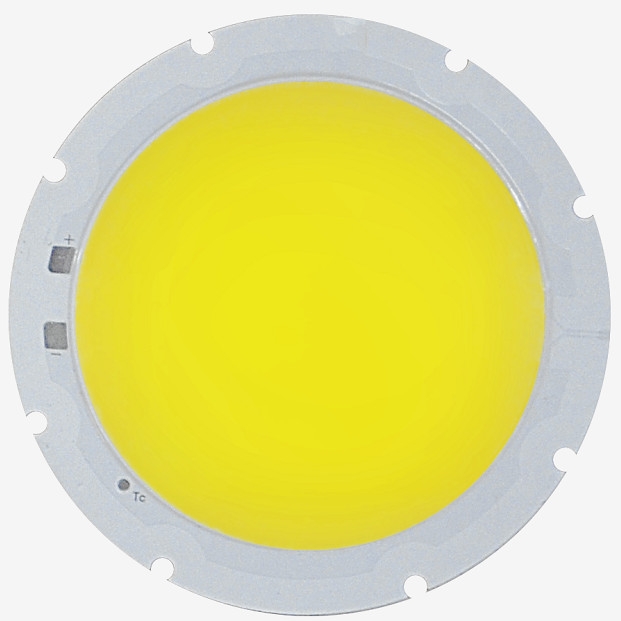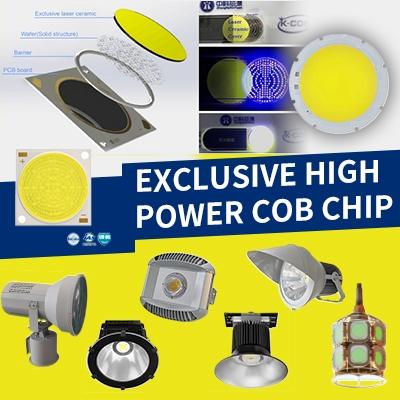Flip Chip COB (Chip-On-Board) represents a pivotal advancement in electronic packaging technology, where semiconductor devices are mounted upside down (flip chip) directly onto circuit boards. This technique not only enhances performance but also minimizes the size of the final product. The innovation inherent in Flip Chip COB technology is critical in today’s fast-evolving electronics industry, enabling more compact, efficient, and robust electronic devices. CAS CERAMIC, a leading Chinese academy of science-based LED manufacturers, embodies this spirit of innovation. Since its establishment in 2013, CAS CERAMIC has specialized in the development, engineering, and manufacturing of advanced phosphor ceramic COB LEDs—known as K-COB—utilizing patented technologies. Through relentless research in phosphor ceramic optimization, CAS CERAMIC strives to offer superior performance, reliability, and cost-effectiveness in LED lighting solutions.
Historical Context
Evolution of Electronic Packaging Techniques
Electronic packaging has undergone significant transformations over the decades, driven by the relentless pursuit of more powerful and compact devices. Initially dominated by through-hole technology, the landscape shifted towards surface mounting in the 1980s, offering enhanced performance and reduced sizes. The continuous push for miniaturization and better thermal management led to further innovations, including Ball Grid Array (BGA) and eventually, advanced packaging methods such as Flip Chip technology.
Challenges Faced by Traditional Packaging Methods
Traditional electronic packaging methods like wire bonding presented several challenges as device complexity and performance expectations increased. Issues included high parasitic inductance and capacitance, leading to slower signal speeds and reduced overall device performance. Additionally, the larger footprints and extensive use of materials often resulted in increased costs and reduced thermal dissipation capabilities, hampering the efficiency and longevity of devices.
Emergence of Flip Chip Technology
Flip Chip technology emerged as a revolutionary solution to these challenges in the late 20th century. By inverting the semiconductor chip and connecting it directly to the substrate, Flip Chip technology significantly reduced interconnect lengths, minimizing parasitics and enhancing signal integrity. This innovation paved the way for more compact, efficient, and robust electronic assemblies, setting a new standard in electronic packaging.
Understanding Flip Chip COB
Definition and Basic Principles
Flip Chip COB (Chip-On-Board) is a cutting-edge packaging technique where the semiconductor chip is mounted upside down (flipped) and connected directly to the printed circuit board or substrate. This direct connection is typically achieved using bumps formed on the chip pads, which align with corresponding pads on the substrate, creating a shorter path for electrical signals compared to traditional wire bonding.
Comparison with Conventional Wire Bonding
Unlike conventional wire bonding that uses fine wires to connect chip pads to substrate leads, Flip Chip COB uses conductive bumps that provide a direct electrical path. This method eliminates the longer wire paths and associated issues like higher resistance, inductance, and susceptibility to mechanical stress, leading to significant improvements in signal integrity and mechanical robustness.
Advantages of Flip Chip COB
1. Improved Electrical Performance
Flip Chip COB allows for much shorter interconnect distances, drastically reducing parasitic inductance and capacitance. This results in faster signal transmission speeds and improved bandwidth, crucial for high-performance applications in computing and telecommunications.
2. Enhanced Thermal Management
The direct contact of the chip’s active area with the substrate enhances heat dissipation. Flip Chip COB configurations can also integrate heat spreaders and cooling solutions more efficiently than traditional methods, critical for maintaining the operational integrity of high-power and high-frequency devices.
3. Miniaturization and Form Factor Benefits
The elimination of wire bonds not only reduces the space needed for connections but also allows for a tighter packing of components. This miniaturization is essential for modern devices such as smartphones, wearables, and medical implants where space is at a premium.
4. Increased Reliability and Durability
Flip Chip COB’s robust interconnect structure significantly enhances the mechanical strength of the package, making it less susceptible to damage due to thermal stress, vibration, and mechanical shock. This reliability is vital for applications in harsh environments, such as automotive and industrial electronics.
Implementation and Applications
Industries Adopting Flip Chip COB
Flip Chip COB technology has been adopted across a broad spectrum of industries, each benefiting from its enhanced performance and reliability:
- Consumer Electronics: In devices like smartphones, tablets, and laptops, Flip Chip COB helps achieve thinner profiles and faster performance by facilitating higher density of components and improved heat dissipation.
- Automotive: Modern vehicles, which integrate advanced driver-assistance systems (ADAS) and in-car entertainment systems, rely on Flip Chip COB for its robustness and superior thermal management.
- Aerospace and Defense: The technology‘s high reliability and resistance to harsh environments make it ideal for spacecraft, satellites, and military hardware where failure is not an option.
- Medical Devices: For implants and other critical medical equipment, Flip Chip COB‘s small size and reliability ensure that devices operate safely within the human body.
Specific Use Cases and Success Stories
Flip Chip COB has enabled various innovations and improvements across several applications:
- High-Performance Computing: Data centers and servers use Flip Chip COB to manage intense processing tasks more efficiently, thanks to its superior electrical performance and heat dissipation.
- IoT Devices: Internet of Things (IoT) gadgets benefit from Flip Chip COB’s ability to pack more functionality into smaller spaces, crucial for devices like smart home sensors and automation controllers.
- Wearable Technology: Wearables require compact, efficient, and durable electronics. Flip Chip COB meets these demands, allowing for sleeker designs and longer battery life in products like fitness trackers and smartwatches.
Challenges and Future Directions
Remaining Hurdles in Flip Chip COB Adoption
Despite its benefits, Flip Chip COB faces several challenges:
- Cost: Initial costs for setting up Flip Chip COB technology are high due to sophisticated equipment and processes needed.
- Technical Complexity: The process requires precise alignment and attachment techniques, making it complex to implement.
- Material Limitations: Finding materials that can withstand the thermal and mechanical stress during device operation is still a challenge.
Potential Solutions and Advancements
Addressing these challenges could involve:
- Process Innovation: Developing more cost-effective and simpler fabrication techniques can make Flip Chip COB more accessible.
- Material Research: Ongoing research into new materials that can better handle the extremes of electronic operation is crucial.
- Standardization: Establishing industry-wide standards could simplify the integration of Flip Chip COB across different platforms and applications.
Future Trends and Innovations in Electronics Packaging
The future of electronics packaging with Flip Chip COB looks promising, with several trends likely to shape its evolution:
- Integration with Flexible Electronics: Combining Flip Chip COB with flexible substrates could revolutionize wearable and foldable devices.
- Advances in 3D Packaging: Stacking multiple chips using Flip Chip COB can lead to even smaller, more powerful multi-function devices.
- Smart Packaging: Incorporating sensors directly into packaging to monitor device health and performance continuously could enhance diagnostics and maintenance strategies.
As electronics continue to evolve, Flip Chip COB will play a crucial role in driving innovation, making devices more capable, reliable, and compact.
CONCLUSION
Flip Chip COB technology has markedly transformed electronic packaging, offering substantial improvements in device performance, miniaturization, and reliability across various industries. From consumer electronics to critical aerospace applications, this technology facilitates the development of compact, efficient, and robust devices essential for modern technological advancements. Despite facing challenges such as high initial costs and technical complexities, ongoing innovations and research promise to further enhance its applicability and affordability. As the electronics industry continues to evolve, Flip Chip COB stands as a cornerstone technology, poised to meet the increasing demands for more sophisticated and integrated electronic solutions.
Post time: May-13-2024






